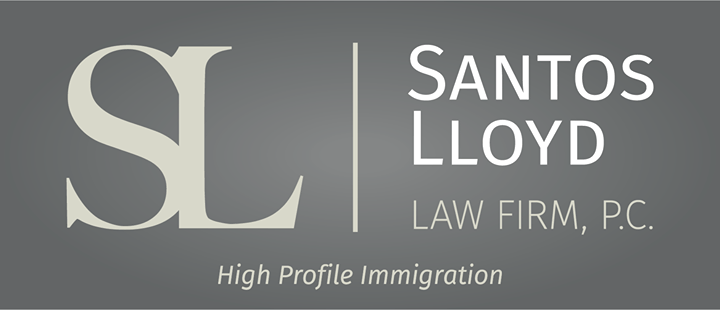¡O-1 ha sido aprobado! ¿Ahora qué sigue? guía para obtener la residencia permanente (Green Card) con EB-1A
Shirin Navabi • March 13, 2025
Click here to read this article in English
Si ha recibido recientemente la emocionante noticia de que su visado O-1 ha sido aprobado, ¡enhorabuena! El visado O-1 es un visado prestigioso que sólo se concede a personas que puedan demostrar una capacidad extraordinaria en su campo, ya sea O-1A: personas con una capacidad extraordinaria en ciencias, educación, negocios o atletismo, u O-1B: personas con una capacidad extraordinaria en artes o logros extraordinarios en la industria cinematográfica o televisiva. Conseguir la aprobación de una visa O-1 no es poca cosa, y es una verdadera validación de su talento y trabajo duro.
Pero para muchos titulares de visados O-1, esa aprobación plantea la siguiente gran pregunta: ¿cuál es el camino para conseguir la residencia permanente? Para quienes desean permanecer en Estados Unidos de forma permanente, el visado EB-1A suele ser el siguiente paso natural. También se conoce como residencia permanente para personas con capacidades extraordinarias, lo que lo convierte en un primo cercano del visado O-1.
La obtención de la residencia permanente en Estados Unidos a través del EB-1A implica dos pasos: 1) conseguir la aprobación de la petición de inmigración EB-1A (formulario 1-40) y 2) ajustar el estatus al de residente permanente o solicitar la tramitación consular.
Sin embargo, aunque estas dos categorías comparten similitudes, no son idénticas. El estándar EB-1A es significativamente más alto, y muchos titulares de O-1 subestiman cuántas más pruebas necesitan presentar para calificar para la residencia permanente. La buena noticia es que, si usted es proactivo y estratégico en la construcción de su caso, puede mejorar significativamente sus posibilidades de éxito.
Entendiendo la diferencia entre O-1 y EB-1A
Tanto el visado O-1 como el EB-1A se centran en personas con aptitudes extraordinarias, pero tienen finalidades diferentes. El O-1 es un visado de trabajo temporal que le permite venir a Estados Unidos para trabajar en proyectos específicos o para un empleador concreto. Requiere que un patrocinador estadounidense presente la petición en su nombre.
El EB-1A, por el contrario, es un visado de inmigrante: es el primer paso hacia la obtención de la residencia permanente. Dado que el EB-1A conduce a la residencia permanente, sus requisitos son aún más estrictos. No sólo debe demostrar una capacidad extraordinaria, sino también que su reconocimiento se mantiene a lo largo del tiempo y que su trabajo ha tenido un impacto duradero en su campo.
¿Qué puede reutilizar de su caso O-1?
Si su petición O-1 es sólida, algunas de las pruebas que presentó seguirán siendo valiosas para la EB-1A. Esto incluye sus premios, cobertura mediática, cartas de expertos y pruebas de pertenencia a organizaciones prestigiosas. Pero el EB-1A exige más: tiene que ir más allá de mostrar lo que ha logrado y demostrar que su influencia es continua, impactante y reconocida a nivel nacional o internacional.
Cómo fortalecer su caso mientras está en O-1
Una de las medidas más inteligentes que puede tomar es aprovechar el tiempo que tenga el visado O-1 para reforzar activamente su perfil EB-1A. Esto significa buscar oportunidades para que su trabajo aparezca en medios de comunicación de primer nivel, publicar más contribuciones originales, ser jurado en concursos y asumir funciones de liderazgo en su comunidad profesional. Cada acción que emprenda para aumentar su visibilidad e influencia.
Reflexiones finales - El camino del O-1 al EB-1A es factible
Es posible que no pueda presentar su EB-1A hoy, pero podemos ayudarle a construir su caso paso a paso. Ya sea que necesite orientación sobre el fortalecimiento de su perfil, la identificación de las pruebas adecuadas, o la preparación de un plan estratégico de presentación, nuestro equipo está aquí para apoyarle.
Si usted está actualmente en una visa O-1 y cree que puede ser elegible para una visa EB-1A en el futuro, le animamos a ponerse en contacto con nuestra oficina. Nuestros abogados experimentados han ayudado a innumerables personas a navegar con éxito este camino, y estaremos encantados de revisar su caso y crear guia personalizada para su viaje de residencia permanente.
Este blog no pretende ser una asesoría legal y nada aquí debe interpretarse como el establecimiento de una relación abogado-cliente. Programe una consulta con un abogado de inmigración antes de actuar sobre cualquier información que aquí lea.

Once you have connected with a college program, have been admitted to the school, and deemed eligible to compete athletically, you will need to secure an F-1 student visa in order to actually attend your new college and begin your time as a student athlete. The first step in the visa process is to receive your Form I-2

For many talented athletes around the world, U.S. college athletics represent a remarkable opportunity to combine elite athletic competition with higher education. In sports such as basketball, soccer, track and field, and tennis, among others, hundreds of colleges and universities across the United States offer struct

Under the new regulation, if a person filed or files Form I-589, Application for Asylum and for Withholding of Removal after October 1, 2024, and the application remains pending with USCIS for 365 days, the applicant must pay an Annual Asylum Fee (AAF) on the one-year anniversary of his or her filing date.



